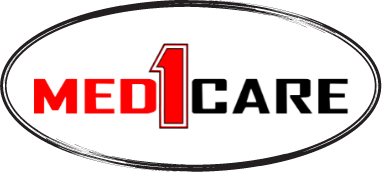Outpatient Occupational Therapy vs. Inpatient: Understanding the Differences
Outpatient Occupational Therapy vs. Inpatient: Understanding the Differences
Choosing between outpatient and inpatient occupational therapy is a decision that reshapes an individual’s recovery journey. It’s a significant fork in the road, leading to different futures in health and independence.
Outpatient occupational therapy stands as a flexible option, integrating into the daily ebb and flow of life, providing support tailored to each person’s unique needs. It’s about adapting therapy to fit personal and professional commitments, offering a path of adaptability and promise.
As you approach this crucial decision, understanding the detailed differences, benefits, and impacts of each option is key. This guide is crafted to illuminate these aspects, ensuring your choice is well-informed and perfectly aligned with the rhythm of your life. So read on for more key information.
Understanding Outpatient Occupational Therapy
Outpatient occupational therapy is revolutionizing the way individuals approach recovery. This mode of therapy is all about fitting into your life, not interrupting it.
Imagine continuing your daily routine while seamlessly integrating therapy sessions into your schedule. This approach isn’t just about convenience. It’s about maintaining the life you love while working towards better health and greater independence.
During these sessions, therapists focus on what matters most to you. They will help you master everyday tasks, whether it’s:
- Getting dressed
- Preparing meals
- Managing your workday efficiently
The goal is to enhance your ability to live independently and confidently. Outpatient therapy emphasizes personalized treatment plans tailored to fit your specific needs and goals. This makes it a highly effective option for many seeking to balance recovery with the demands of everyday life.
As you embark on this path, you’re not just healing. You are also learning to thrive in your environment with newfound skills and resilience.
The World of Inpatient Occupational Therapy
Inpatient occupational therapy is an immersive, intensive experience. Unlike its outpatient counterpart, this option involves staying full-time in a hospital or rehabilitation center.
Here, the world revolves around your recovery. You receive constant care and support from a dedicated team, focused solely on helping you get back on your feet.
In this setting, each day is structured around your therapy. From the moment you wake up to when you go to sleep, everything is designed to maximize your rehabilitation.
It’s a comprehensive approach, ideal for those with severe conditions or recovering from significant surgeries or illnesses. The goal is to provide you with intensive therapy that leads to significant improvements, all within a controlled, supportive environment.
While it might seem daunting to be away from home, the 24/7 care ensures that every aspect of your recovery is addressed. You’re not just a patient; you’re a person on a path to regain independence, and every step is guided by professionals committed to your well-being. Accordingly, this immersive approach aims to get you back home, equipped with the skills and strength you need to continue healing.
Comparing Costs: Outpatient vs. Inpatient
When it comes to choosing between outpatient and inpatient occupational therapy, understanding the cost differences is crucial. Generally, outpatient therapy is more budget-friendly. Why? Because it involves fewer resources and less time commitment from healthcare professionals. You attend therapy sessions for a few hours and then return to your daily life, cutting down on the costs of extended medical care.
Inpatient therapy, on the other hand, is more resource-intensive. Staying at a facility means 24/7 care, all-inclusive treatment, and access to specialized equipment and staff. This round-the-clock attention comes with a higher price tag, reflecting the intensive care and facilities you’re accessing.
But don’t let the numbers make the decision for you. Think about what you are getting for the cost: the convenience and flexibility of outpatient care or the intensive, focused environment of inpatient care.
Your insurance coverage can also play a big part in this decision, so be sure to understand what’s included in your plan. Ultimately, weighing the cost against the type of care you need is key to making the right choice for your health and financial situation.
Results Matter: Outpatient vs. Inpatient
When weighing outpatient versus inpatient occupational therapy, consider the results each can offer. Outpatient therapy is often a longer journey. It integrates into your life, allowing you to apply what you learn in real-time, at your own pace.
It’s about gradual improvement. The idea is to maintain your lifestyle while you regain strength and skills.
Inpatient therapy, conversely, is about concentrated, quick results. Being in a dedicated facility means your whole day is focused on recovery.
The structured, intensive environment is designed to maximize improvement in the shortest time possible. It’s a full immersion, where every resource is at your disposal to catalyze your healing.
The right choice depends on your personal health goals and situation. Do you need the steady integration of outpatient care or the intensive focus of inpatient therapy? Consider how each will impact your life, the time you can commit, and the speed at which you wish to see changes.
Balancing these factors will guide you to the therapy type that aligns with your recovery goals.
Navigating Insurance Coverage
Understanding how insurance works with outpatient and inpatient occupational therapy is key to making an informed decision. Most insurance plans typically cover both options, but the extent and specifics can vary greatly.
For outpatient therapy, insurance may cover a set number of sessions or up to a certain amount. It allows you to receive regular treatment with less worry about the costs.
Inpatient therapy, being more intensive, often has different coverage rules. It might be covered for a certain period, or only under specific conditions, due to its higher costs and extensive resources.
It’s essential to talk to your insurance provider to get the details on what’s covered, including:
- The duration
- Type of therapy
- Any out-of-pocket costs you might need to prepare for
Knowing the ins and outs of your policy can significantly impact your decision. Ensure you understand your coverage; it can alleviate financial stress and let you focus on what really matters: your health and recovery.
Take the time to review your plan, ask questions, and consider how insurance will influence your therapy choice. With the right information, you can navigate the insurance landscape confidently, making a choice that suits both your health needs and your budget.
Weighing the Benefits
Deciding between outpatient and inpatient occupational therapy involves more than just understanding costs and logistics. It’s also about weighing the unique benefits each offers.
Outpatient therapy is known for its flexibility and convenience. It allows you to receive care while maintaining your daily routine, providing a balance between treatment and personal life. This option is great for those who value their independence and are motivated to integrate therapy into their existing schedule.
Inpatient therapy offers a different set of advantages. With 24/7 care and a structured environment, it provides intensive support and supervision. This is particularly beneficial for those with severe conditions or after major surgeries, where constant medical attention is necessary.
The immersive nature of inpatient therapy means that every aspect of your day is focused on recovery, which can lead to more significant improvements in a shorter time.
Both paths have their merits, and the best choice depends on your specific needs, health condition, and personal circumstances. Consider:
- The level of support you require
- Your daily responsibilities
- How each option aligns with your recovery goals
By understanding and comparing the benefits of outpatient and inpatient occupational therapy, you can make a decision that leads to the best possible outcome for your health and well-being.
Essential Tools: Occupational Therapy Equipment
Occupational therapy equipment plays a vital role in your recovery, regardless of whether you opt for outpatient or inpatient therapy. This equipment ranges from basic items like grip strengtheners and dressing aids to more advanced technology such as electronic devices for mobility and coordination.
These tools are essential for enhancing your ability to perform daily tasks. They improve your quality of life one step at a time.
In outpatient settings, you might use a variety of these tools during your scheduled sessions, tailored to fit your specific rehabilitation needs. Inpatient facilities typically have a broader range of equipment available on-site, providing a comprehensive array of options for intensive therapy. However, the core aim is the same: to support and accelerate your recovery journey.
Understanding the types of equipment you may encounter and how they contribute to your therapy can make a significant difference in your rehabilitation. Whether you’re working with simple aids at home or utilizing complex machinery in a facility, these tools are fundamental in helping you regain independence and strength. As you progress through therapy, the right equipment will adapt with you, ensuring your path to recovery is equipped with everything you need.
Embracing Outpatient Occupational Therapy
Embracing outpatient occupational therapy means choosing a path filled with potential and adaptability. It’s about selecting a recovery journey that will fit into your life, not one that dictates it.
We’re Med1Care, Ohio’s premier home health care and medical staffing provider with a five-star rating. We offer skilled nursing, therapy services, personal care, and healthcare staffing support.
Need quality care or a healthcare career in Toledo or Findlay? Contact Med1Care (Toledo office) for top-notch service and care. You can also find our Findlay office contact info on the website.


